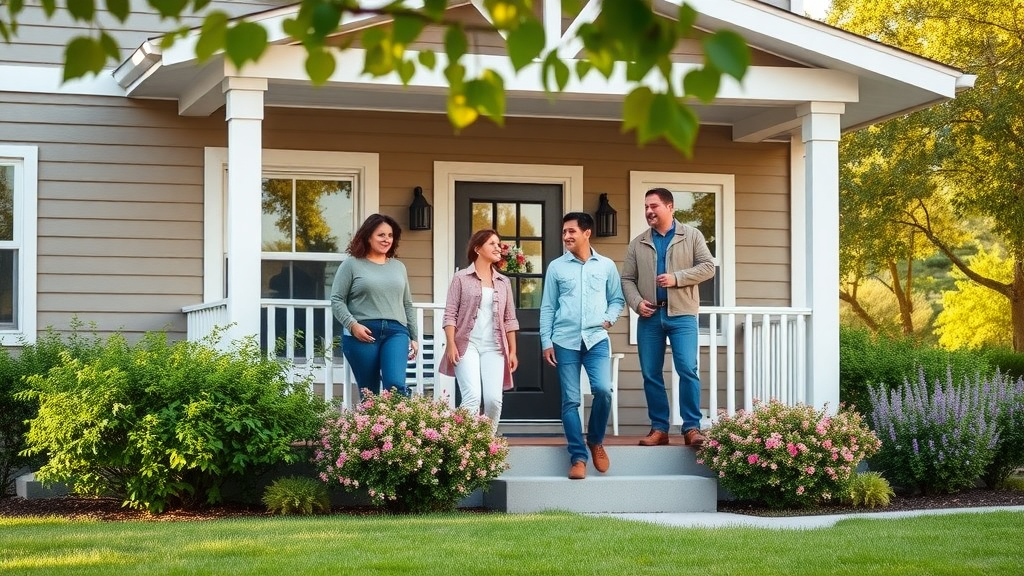Your home’s exterior is the first impression visitors and passersby have of your property. Selecting the appropriate siding color and material not only enhances your home’s curb appeal but also reflects your personal style and complements its architectural design. With a multitude of siding colors, materials, and combinations to choose from, making the right decision can feel overwhelming. However, did you know that a well-chosen exterior can increase your home’s value by up to 10%? This comprehensive guide arms you with practical tips, industry insights, and impactful trends to help you select the perfect siding option, maximize your home’s value, and ensure a beautiful, lasting result.
- How siding color and material affect home value and style
- Factors to consider for durability, maintenance, and aesthetics
- Popular and trending siding materials and color combinations for 2024
- Step-by-step selection process, pro tips, and common mistakes to avoid
Why Siding Color and Material Matter: Impact on Home Design and Value
The choice of siding color and material plays a pivotal role in shaping your home’s overall appearance, architectural harmony, and market value. The right combination can make your home stand out, offering a distinct, personalized curb appeal while protecting your investment for decades to come. Modern home buyers often judge properties first by their exterior; an inviting, cohesive look not only creates visual interest but also signals quality and pride of ownership.
Color trends shift over time, but timeless hues and materials that suit the environment, climate, and house style remain highly desirable. Additionally, material performance factors—such as weather resistance and ease of maintenance—directly influence homeowner satisfaction and resale value. With advanced technology in siding products , newer materials even promise lifetime warranties and vibrant, fade-resistant finishes.
“According to the National Association of Realtors, homes with well-chosen siding color and material can increase property value by up to 10%.”
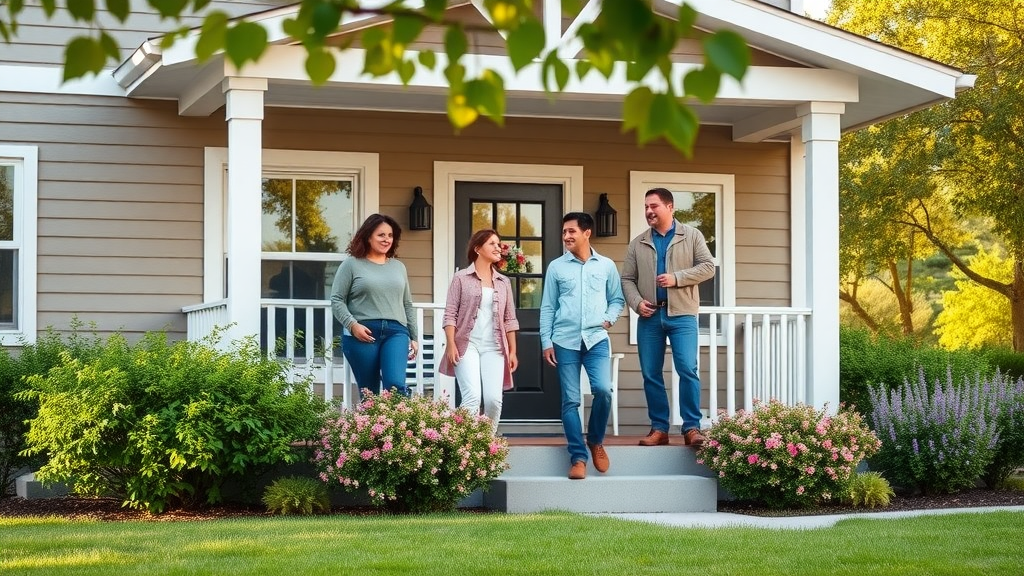
Factors to Consider When Choosing Siding Color and Material
Selecting the best house siding material and siding color for your home requires careful evaluation of various factors. Your architectural style sets the stage, guiding color choices and material options that naturally complement your home’s structure and era. Regional trends and neighborhood preferences may also impact your decision—consider nearby homes and HOAs to ensure harmony and compliance.
Local climate is another crucial element; harsh sunlight, humidity, rain, or cold can impact certain siding colors and materials differently, affecting color longevity and exterior resilience. Budget constraints and long-term cost considerations matter as well, since siding upgrades constitute a significant home improvement investment. Lastly, look for accessible resources like online design tools and manufacturer guides to visualize and test your preferred color combinations before committing.
For homeowners seeking expert guidance on material selection, installation, and color coordination, exploring professional siding services can provide valuable insights and ensure your project is completed to the highest standards.
- Architectural style and regional trends
- Climate and weather resilience
- Maintenance and durability of siding materials
- Budget and long-term costs
- Neighborhood covenants and design tool resources
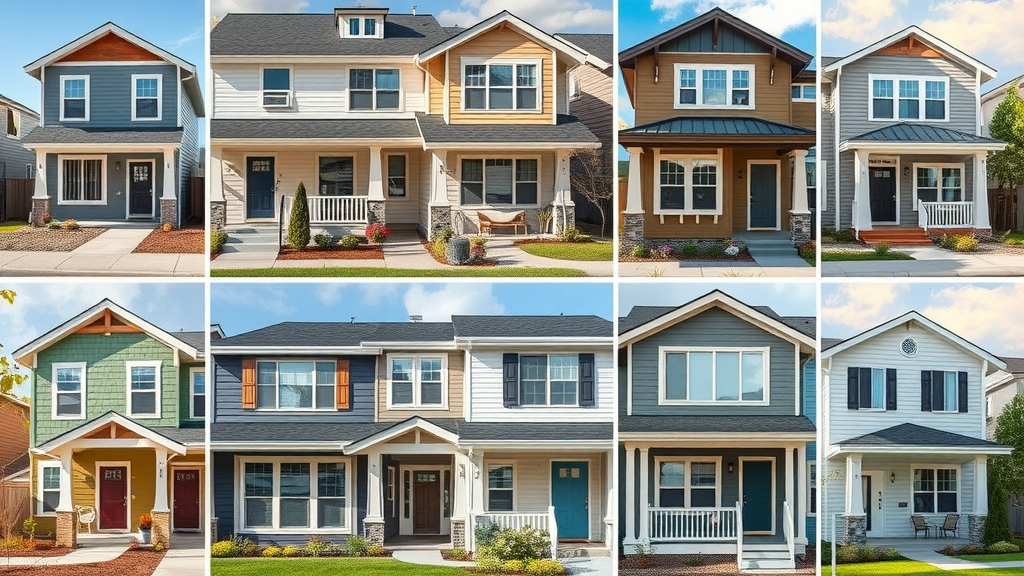
Popular Siding Materials Explained: Vinyl, Fiber Cement, and More
The market offers a wide range of house siding materials to suit different budgets, aesthetics, and performance requirements. Each material presents unique benefits in terms of color selection, longevity, ease of maintenance, and environmental impact. Let’s break down some of the most popular house siding products to help you compare and choose confidently.
Whether you prefer the affordability and versatility of vinyl siding , the durability of fiber cement , or the classic appeal of wood and metal, understanding key material characteristics ensures you select an option that both complements your home exterior and stands the test of time. The right color combinations further accentuate your siding’s visual impact and can even provide additional color protection against the elements.
Vinyl Siding: Versatility, Colors, and Longevity
Vinyl siding ranks as a top siding option for homeowners thanks to its broad range of siding colors , affordability, and virtually maintenance-free qualities. Modern vinyl products deliver richness in color, weather resistance, and the flexibility to mimic natural textures. Its lightweight construction enables easier installation compared to some other materials, making it ideal for DIY or rapid professional projects. Innovations in technology color protection , such as Chromatix, ensure fade-resistance and long-lasting visual appeal, reducing repainting needs and delivering savings over time.
One key advantage of vinyl siding is its adaptability to almost any architectural style—modern, traditional, or contemporary—thanks to an expanding palette of siding colors and style variations. Vinyl siding typically lasts between 20 and 40 years, depending on climate exposure and product quality, offering a cost-effective way to make your home stand out for decades. If you’re seeking a colorful, low-maintenance exterior that fits a tight budget, vinyl remains a compelling choice.
Fiber Cement Siding: Durability and Modern Color Combinations
Fiber cement siding has surged in popularity for its superior resilience to fire, rot, and insects, making it a trusted option for a variety of climates. This siding type is composed of cement, sand, and cellulose fibers, resulting in a sturdy, low-maintenance board that holds vibrant paint and stain finishes. Homeowners love fiber cement for its realistic wood grain appearance, which lends classic charm minus the upkeep of real wood. The material’s superior color retention and capability to absorb bold and natural hues make it a favorite among those seeking fresh, modern color combinations .
In terms of longevity, fiber cement siding can easily last 30 to 50 years or more with proper installation and occasional maintenance. Its durability is especially prized in regions with extreme weather, while new styles and finishes expand the spectrum of aesthetic possibilities. Recent innovations also introduce energy-efficient and environmentally friendly formulations, further increasing its value as a top house siding solution.
Wood, Metal, and Composite Siding Materials: Pros and Cons
For those appreciating traditional elegance, wood siding remains a coveted classic, offering unmatched warmth and texture. Wood siding can be stained or painted in an almost limitless array of color choices , allowing full customization of your home exterior. However, it demands regular maintenance to guard against rot, pests, and color fading, impacting its long-term cost and appeal. Composite siding, by contrast, blends engineered materials to deliver durability, weather resistance, and a range of realistic finishes, with much lower upkeep needs than wood.
Metal siding brings a modern touch, prized for its outstanding longevity (lasting 40+ years), minimal maintenance, and custom finishes. Aluminum and steel options are resistant to fire, rot, and pests while providing distinctive color options—often favored for contemporary and industrial architectural styles. As you weigh each material, consult a detailed comparison chart to make an informed decision that best suits your home and lifestyle priorities.
| Siding Material | Key Benefits | Lifespan | Typical Color Options |
|---|---|---|---|
| Vinyl | Low maintenance, affordable | 20-40 years | Wide color range |
| Fiber Cement | Fire/rot resistant, realistic appearance | 30-50 years | Natural, muted, bold color combinations |
| Wood | Classic look, natural insulation | 20-40 years | Stainable, paintable |
| Metal | Modern, highly durable | 40+ years | Neutrals & custom finishes |
Top Trends in Siding Colors and Combinations for Modern Homes
Siding colors continue to evolve in 2024, with trending siding colors favoring both bold statements and refined, natural tones. Deep navy and charcoal offer a sense of modern sophistication, providing depth and contrast that makes the home stand out. Warm beiges and earthy neutrals remain popular for their timeless appeal and ability to enhance lush landscaping or complement regional styles. Homeowners are also gravitating toward crisp whites and gentle pastels for a clean, bright look that maximizes perceived space and light.
Savvy design is also about accentuating architectural features—pairing a primary siding color with vivid trim or feature walls to create striking color combinations . When planning your exterior design, consider your roof tone, window frames, and even the landscaping palette to ensure a harmonious finish that truly elevates your curb appeal and the overall value of your home.
Popular Siding Colors for 2024
- Deep navy and charcoal gray
- Warm beige and earthy neutrals
- Crisp white and soft pastels
- Bold accents for trim and features
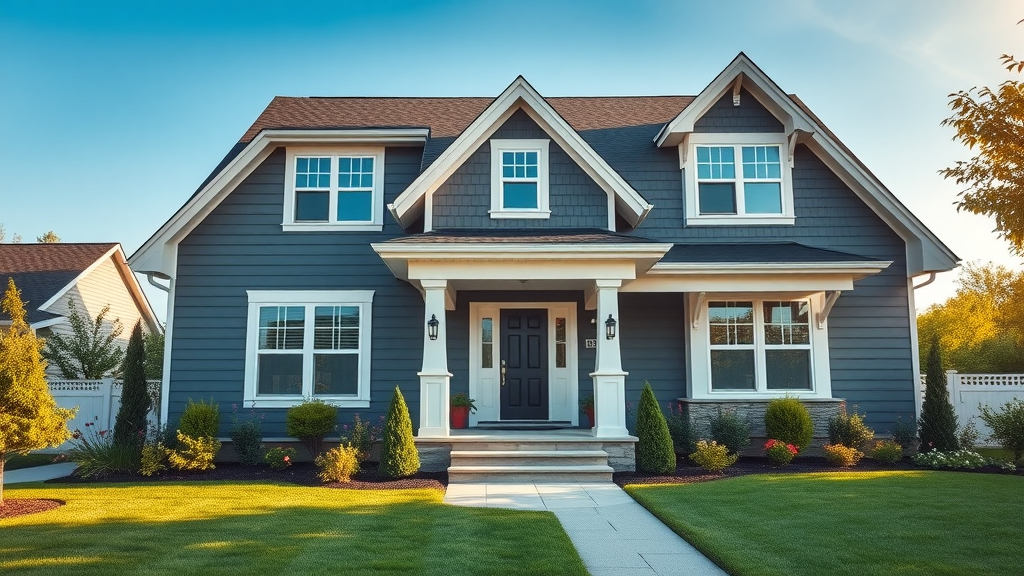
How to Use a Design Tool to Visualize Siding Color and Material Choices
Today’s advanced design tools make it easier than ever to envision how various siding colors and house siding materials will look on your actual home. Many manufacturers and home improvement sites offer free online simulators where you can upload an image of your property or try pre-set templates. By cycling through different color combinations, materials, and trim, you gain a real-world sense of how your choices affect curb appeal and coordinate with existing features.
To maximize the value of a design tool, experiment with lighting effects, neighboring home context, and landscaping. Adjust settings to view siding colors in direct sun, shade, and at different times of day. This process allows you to select with confidence, avoiding expensive missteps and ensuring your exterior vision translates beautifully to reality.
Step-by-Step Guide to Selecting the Right Siding Color and Material
Choosing your home’s new siding can be an exciting yet challenging process. Following a logical, step-by-step strategy guarantees a smooth experience and satisfying outcome. Begin by evaluating your house’s current architectural design and surrounding environment. Consider the interplay of siding color with your roof, stonework, and distinctive features. Next, browse siding material samples—both physically and with design tools—to get a feel for texture and tone.
Delve into the durability, performance, and historical reviews for your short-listed materials. Weigh not just the upfront cost but also potential savings in maintenance, repair, and technology color protection benefits over time. Once you’ve narrowed your choices, consult with experienced professionals to gain tailored advice and accurate quotes before making a final commitment.
- Assess your home’s architecture and surroundings
- Research house siding options and examine samples
- Use a design tool to test siding colors and house siding material combinations
- Weigh pros and cons of suitable siding materials
- Consult with professionals for advice and quotations

People Also Ask: Essential Questions About Siding Color and Material
What is the best material to side your house with?
The best siding material depends on your goals, budget, and climate. Vinyl siding is affordable and low-maintenance; fiber cement offers maximum resilience and aesthetic flexibility; wood delivers natural charm; while metal excels in durability and fire resistance. For most homeowners seeking balance between performance, longevity, and cost, fiber cement and vinyl are leading contenders.
Is it cheaper to paint siding or replace it?
Generally, painting is less expensive upfront than replacing siding. However, not all siding materials are created equal—some, like aging vinyl or damaged wood, may no longer hold paint or provide adequate protection, making replacement a smarter investment in the long run. Factor in repainting frequency, labor, and potential hidden damage when calculating true lifetime costs.
What color siding adds the most value?
Timeless, neutral tones tend to maximize property value—think shades of gray, beige, and soft white. These siding colors attract the broadest range of buyers and complement most architectural styles . Deep blues and charcoals are gaining traction for modern homes but should still blend harmoniously with the roof, trim, and landscape for the best resale results.
Is it better to have dark or light siding?
Both dark and light siding colors offer unique benefits. Light color siding reflects heat, keeping interiors cooler, and can make homes appear larger and brighter. Dark colors create striking contrasts and hide dirt better but may require advanced color protection technology to prevent fading. Choose what complements your home’s style, local climate, and personal preferences.
Common Mistakes to Avoid When Selecting Siding Color and Material
Even with the best intentions, homeowners sometimes overlook critical considerations when picking siding material and color. Aesthetic clashes—such as disregarding the home’s architectural style or existing roof tone—can lead to disappointing results and diminished value. It’s also vital to choose materials and colors proven to withstand your regional weather patterns, reducing costly repairs or premature replacement.
Another common oversight is ignoring the fine print on siding warranties or neglecting to follow manufacturer recommendations. These mistakes can void valuable guarantees and lead to dissatisfaction. Be proactive: research warranty terms, consult product literature, and always work with reputable contractors for a confident, lasting installation.
- Neglecting the home’s style and existing roof color
- Ignoring climate effects on siding materials and colors
- Overlooking siding warranties and manufacturer recommendations
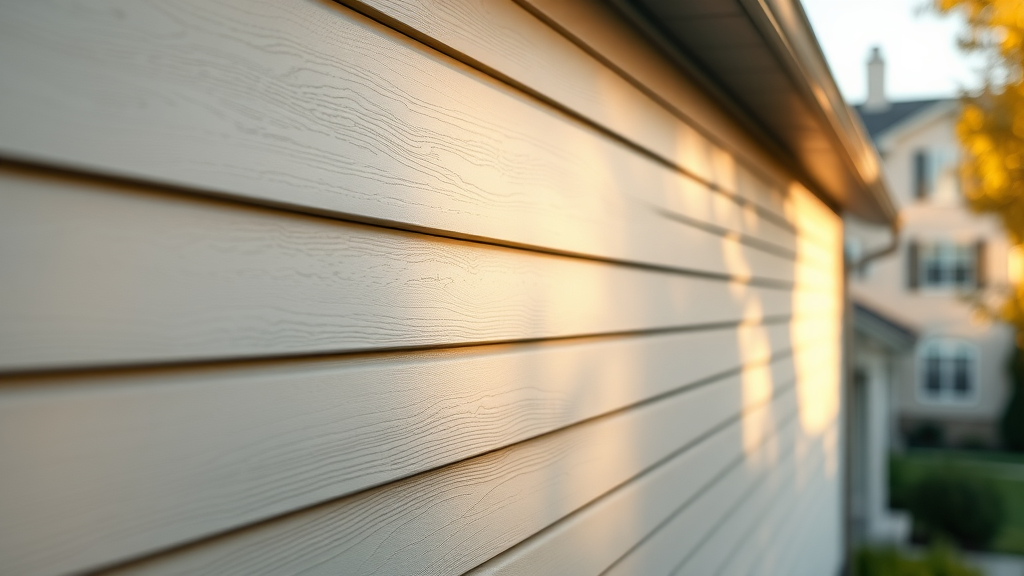
Frequently Asked Questions about Siding Color and Material
How often should siding color be refreshed or replaced?
The need to refresh or replace house siding depends on the siding material and local climate exposure. Vinyl and fiber cement often retain color for decades with minimal fading, especially if made with advanced technology color protection. Wood may require repainting or restaining every 3-7 years, while metal typically keeps its finish for 20+ years if well maintained. Inspect your exterior regularly to ensure lasting curb appeal and performance.
Can I mix different siding materials for a custom look?
Absolutely! Combining siding materials —such as pairing vinyl panels with natural stone or adding wood accents—can create visual interest and emphasize certain architectural features. This trend for custom exteriors is rising, especially when using complementary color combinations . Just be sure to coordinate color palettes and consider maintenance needs for each material to ensure harmony and durability.
Expert Tips: Achieving the Best Results with Your Siding Color and Material
- Order actual siding samples before committing to a color
- Evaluate colors in both sun and shade throughout the day
- Work with certified installers for proper siding material application
By following these expert tips, you maximize both aesthetic appeal and lasting performance for your chosen siding color and house siding material . Actual samples reveal true tones and textures; sunlight and shadow can change your perception of color dramatically; while qualified installers ensure a flawless, weather-tight finish.
Video: Transform Your Home with Siding Color and Material Choices
Watch this visual guide to see real-life home transformations and how the right siding color and material achieved impressive results.
Video: How to Use a Design Tool for Siding Color and Material Visualization
This tutorial demonstrates how to leverage interactive design tools to preview various siding products on your home exterior before making a final selection.
Ready to Elevate Your Home? Discover the Ideal Siding Color and Material for Your House
“Your choice of siding color and material is an investment in beauty, value, and protection. For a tailored consultation, call us at 716 284 1322.”
Take the next step: Order samples, explore design tools, and consult experts to ensure your home siding upgrade delivers decades of style and satisfaction.
If you’re interested in taking your home’s exterior to the next level, consider how a comprehensive approach to both siding and roofing can further enhance curb appeal and long-term value. Discover how integrating your siding choices with full-service residential roofing solutions can create a cohesive, high-performance exterior that stands out in any neighborhood. By aligning your siding and roofing upgrades, you’ll not only boost your property’s protection but also achieve a harmonious look that reflects your unique style. Explore advanced strategies and expert recommendations to make your entire home exterior project a resounding success.

